On May 14, information from the Quang Ninh International Health Quarantine Center said that on average, the unit handles immigration procedures for about 5,000 people per day.
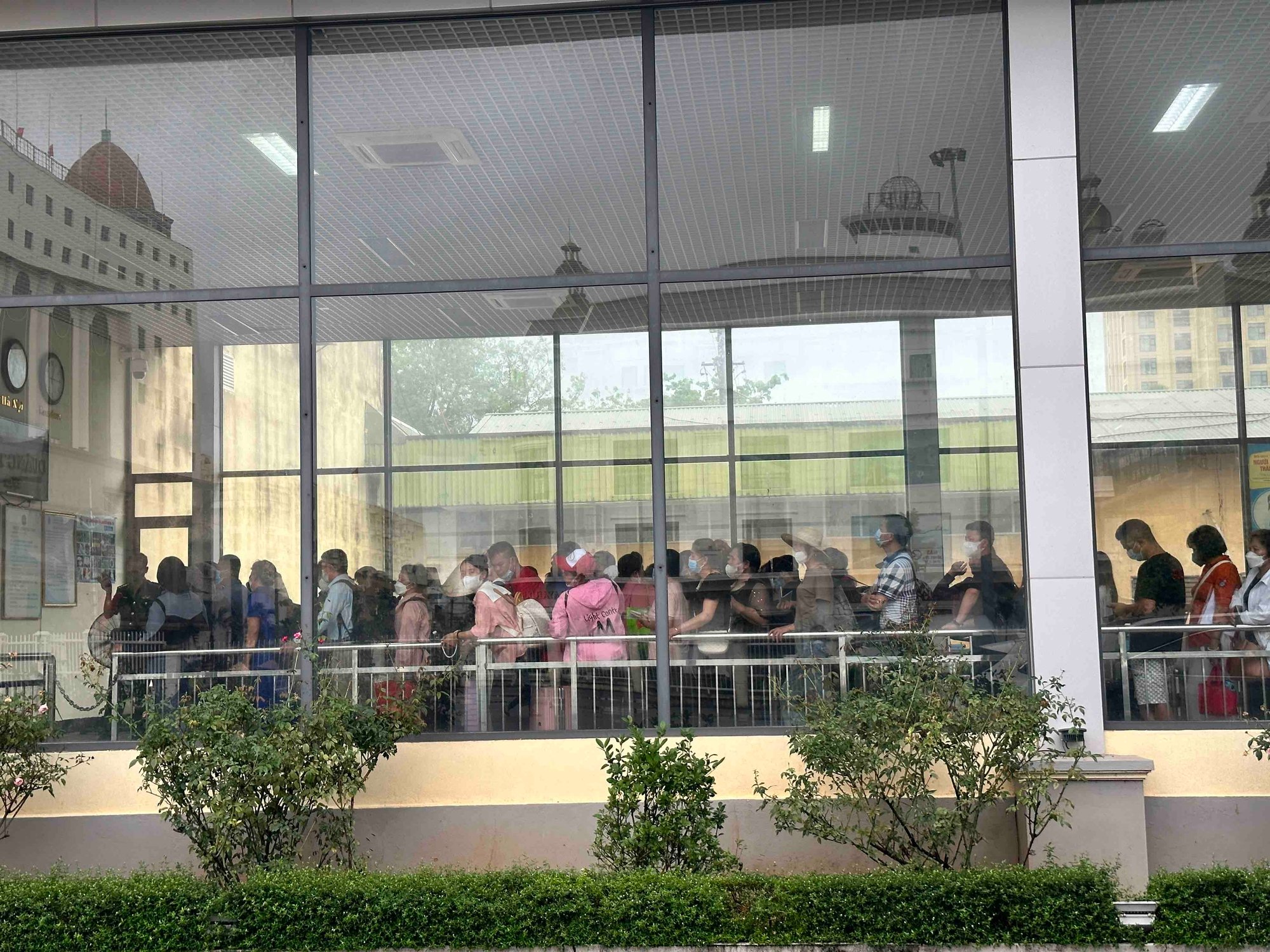
From early morning, the exit area at Mong Cai International Border Gate had quite a lot of people standing in line waiting to do procedures.
Recently, the number of tourists completing exit procedures to China has decreased compared to the April 30 - May 1 holiday, so there is no jostling or queuing like before. However, the time to complete entry procedures to China is still quite long, usually taking several hours.
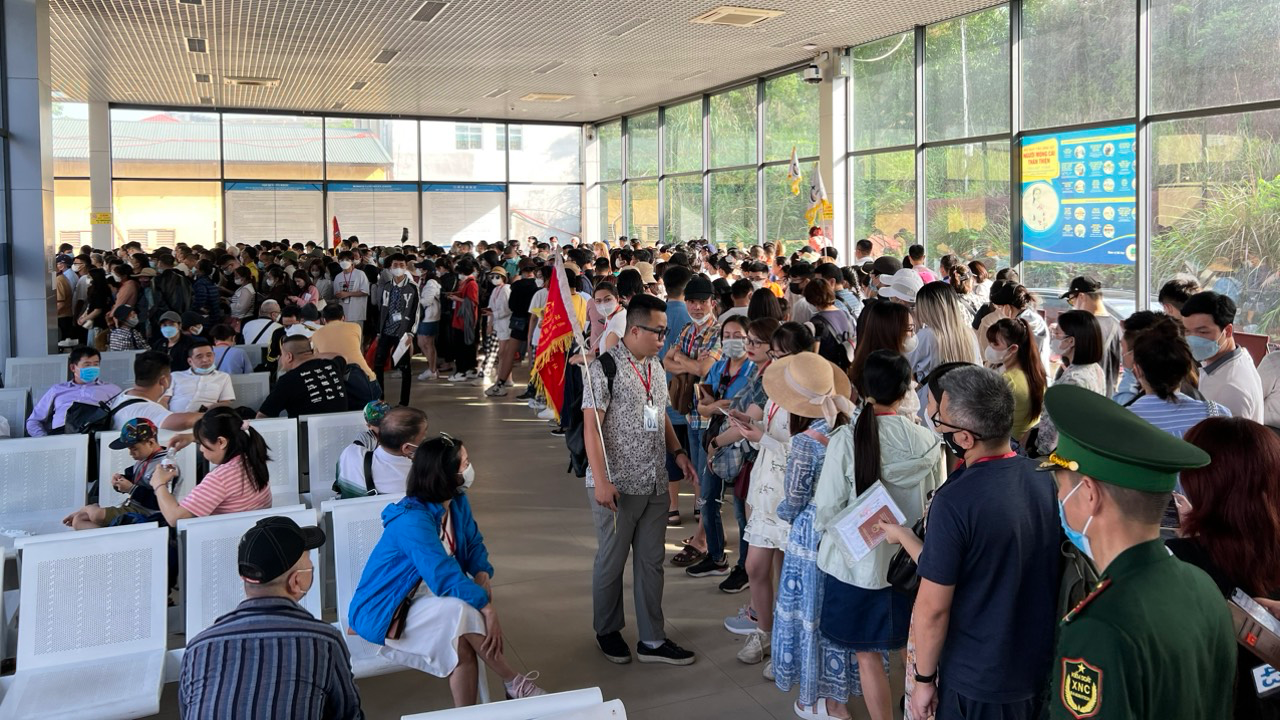
At peak times, Mong Cai International Border Gate is "stuck"
According to the People's Committee of Mong Cai City, the reason is that Dongxing City (China) arranged for border residents and tourists to do the same procedure in one lane, leading to a long time. To enter China, Vietnamese tourists need to use the Wechat application to scan the medical quarantine code.
On average, it takes 2-4 hours to complete immigration procedures for a group of about 20 people; on weekends it can take 5 hours/group. In the case of people being checked for health problems, they must be taken to a separate room and the examination takes 1-2 hours.
During May 12-14, Thanh Nien reporters noted that there were not too many tourists at Mong Cai International Border Gate, most of them were border residents going back and forth to "buy goods" by hand-carrying.
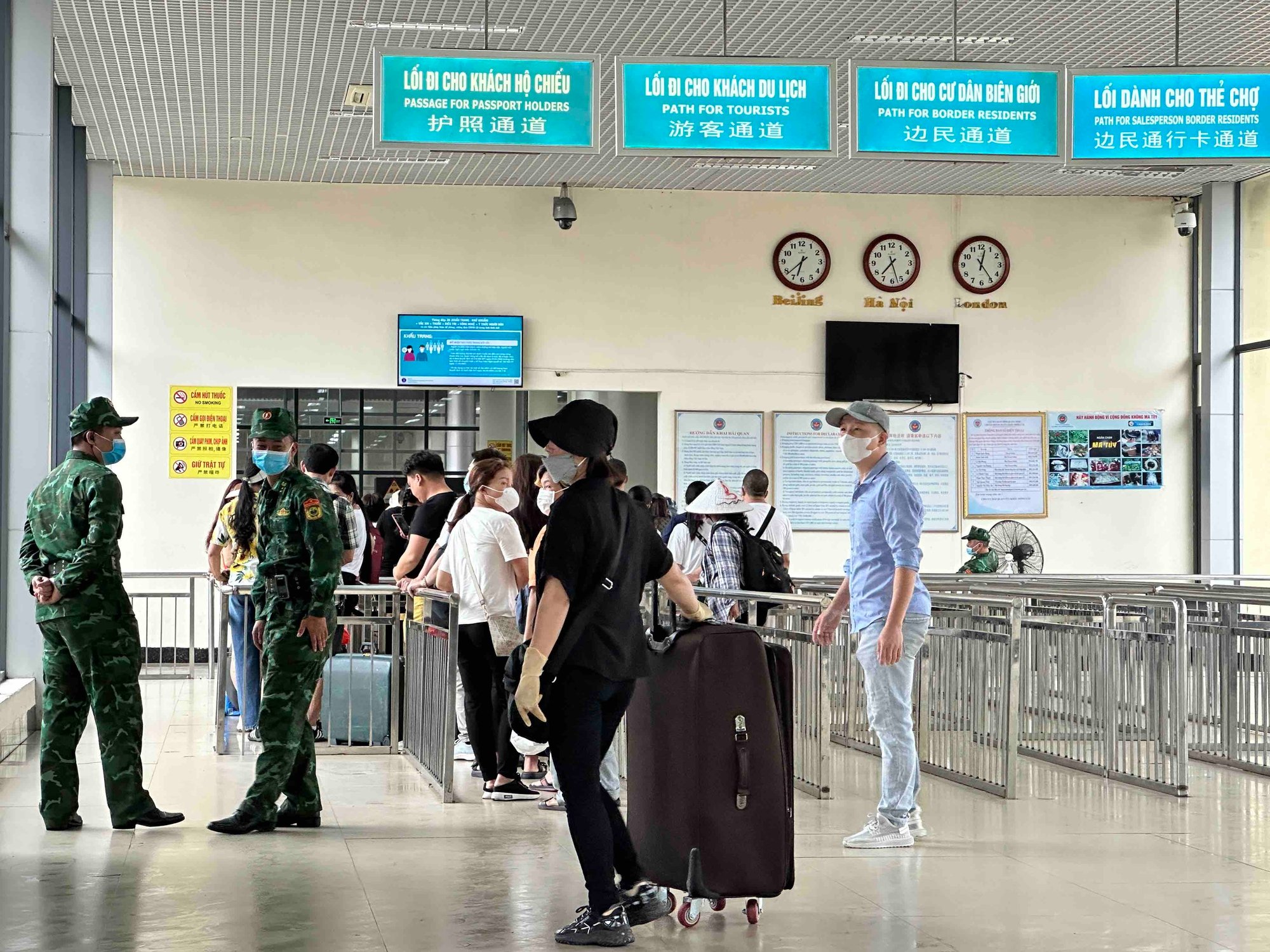
After the April 30 - May 1 holiday, Mong Cai International Border Gate no longer had to jostle to complete procedures.
According to regulations of the Vietnamese Government , border residents are Vietnamese citizens with permanent residence in border areas, people with permits from the border provincial police agency to reside in border areas, are exempt from tax with a customs value of not more than 2 million VND/person/day/trip and not more than 4 trips/month.
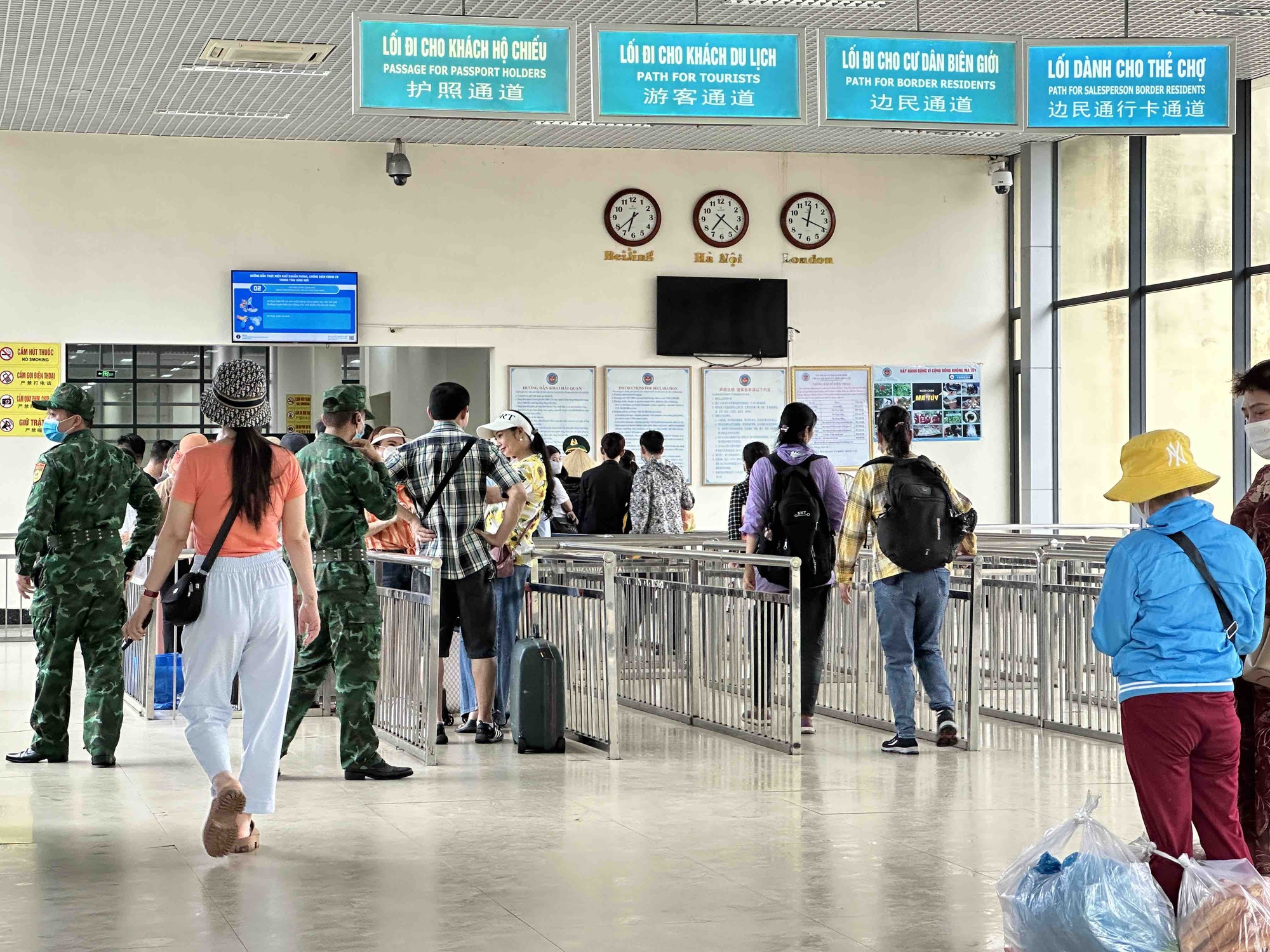
On average, about 5,000 people go through immigration procedures every day.
The group of tax-exempt goods issued by the Ministry of Industry and Trade is mainly consumer goods: clothes, shoes, garment accessories, toilet paper, tissues, etc. and some tools for production. In case of purchasing and transporting goods within the quota, but not used for production or consumption by border residents, tax must be declared and paid according to regulations.
Currently, the trading and exchange of goods by border residents in Quang Ninh are being carried out through the following border gates and openings: Mong Cai International Border Gate; Hoanh Mo Border Gate (Binh Lieu District, Quang Ninh) and Bac Phong Sinh opening (Hai Ha District, Quang Ninh). The main export goods are star anise, cinnamon bark, sedge, seafood, etc.
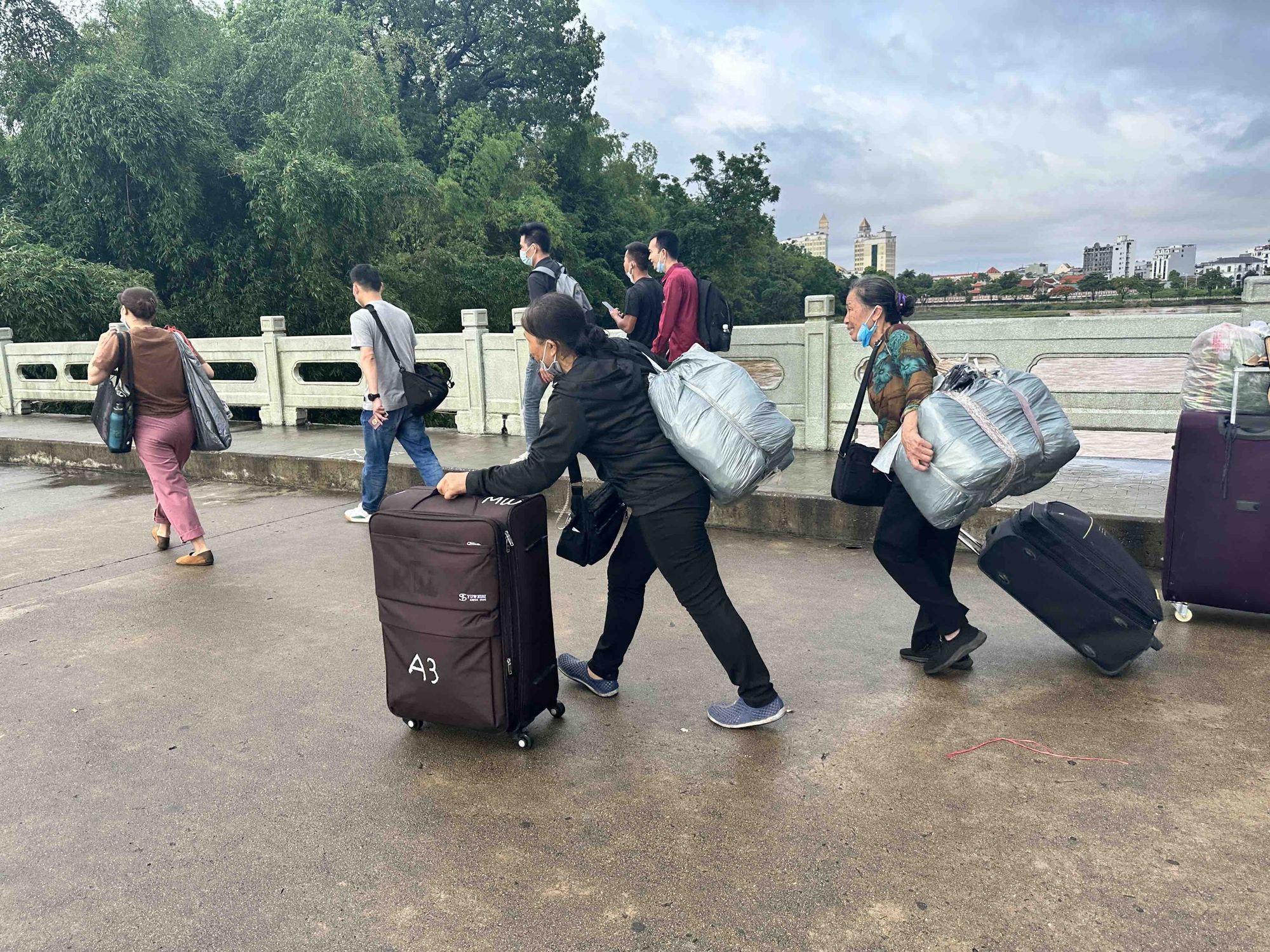
Recently, China has relaxed its immigration regulations, so more border residents are crossing the border.
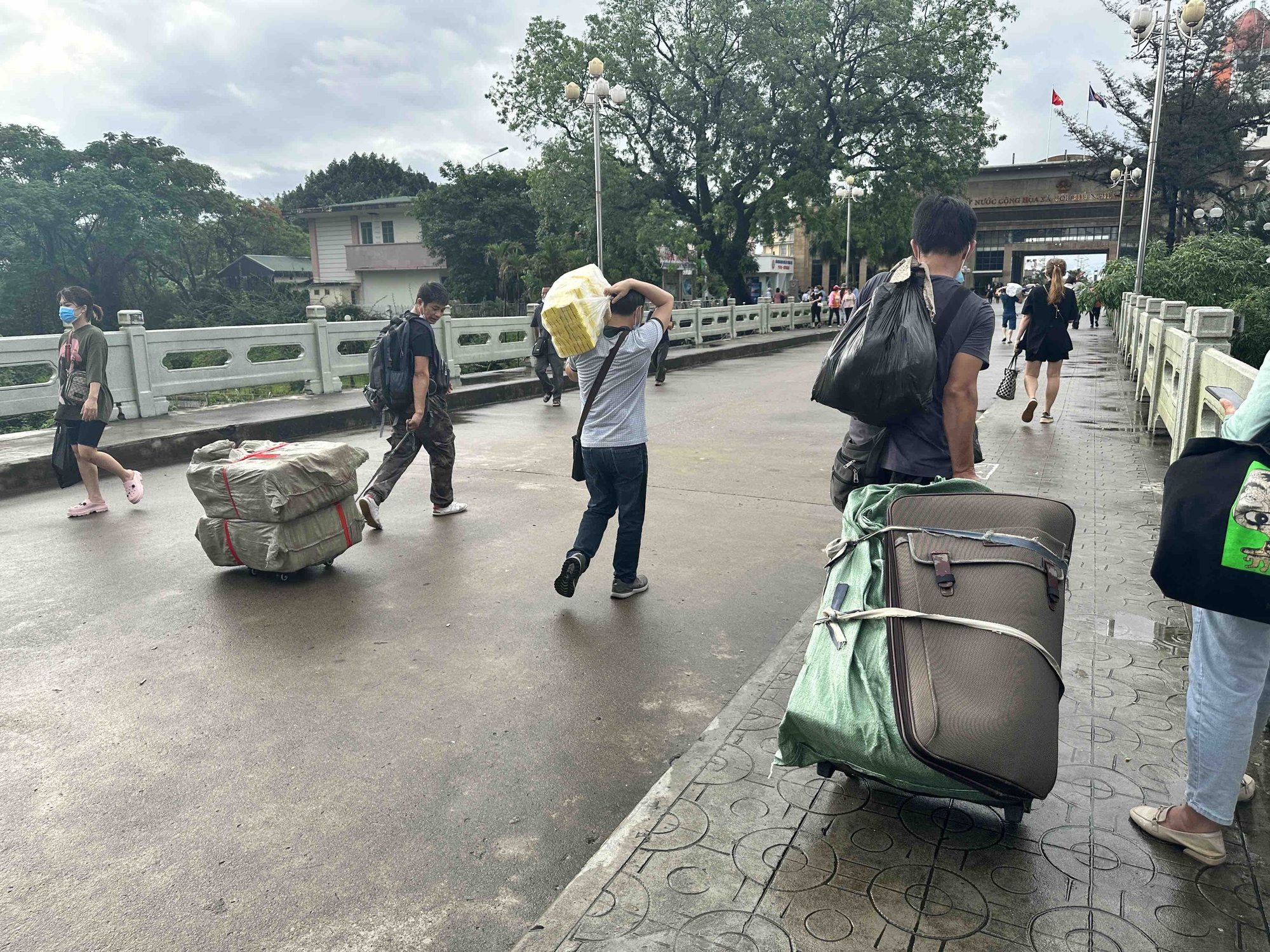
Goods brought back to Vietnam by border residents are consumer goods: clothes, shoes, garment accessories, toilet paper, tissues... and some tools for production.
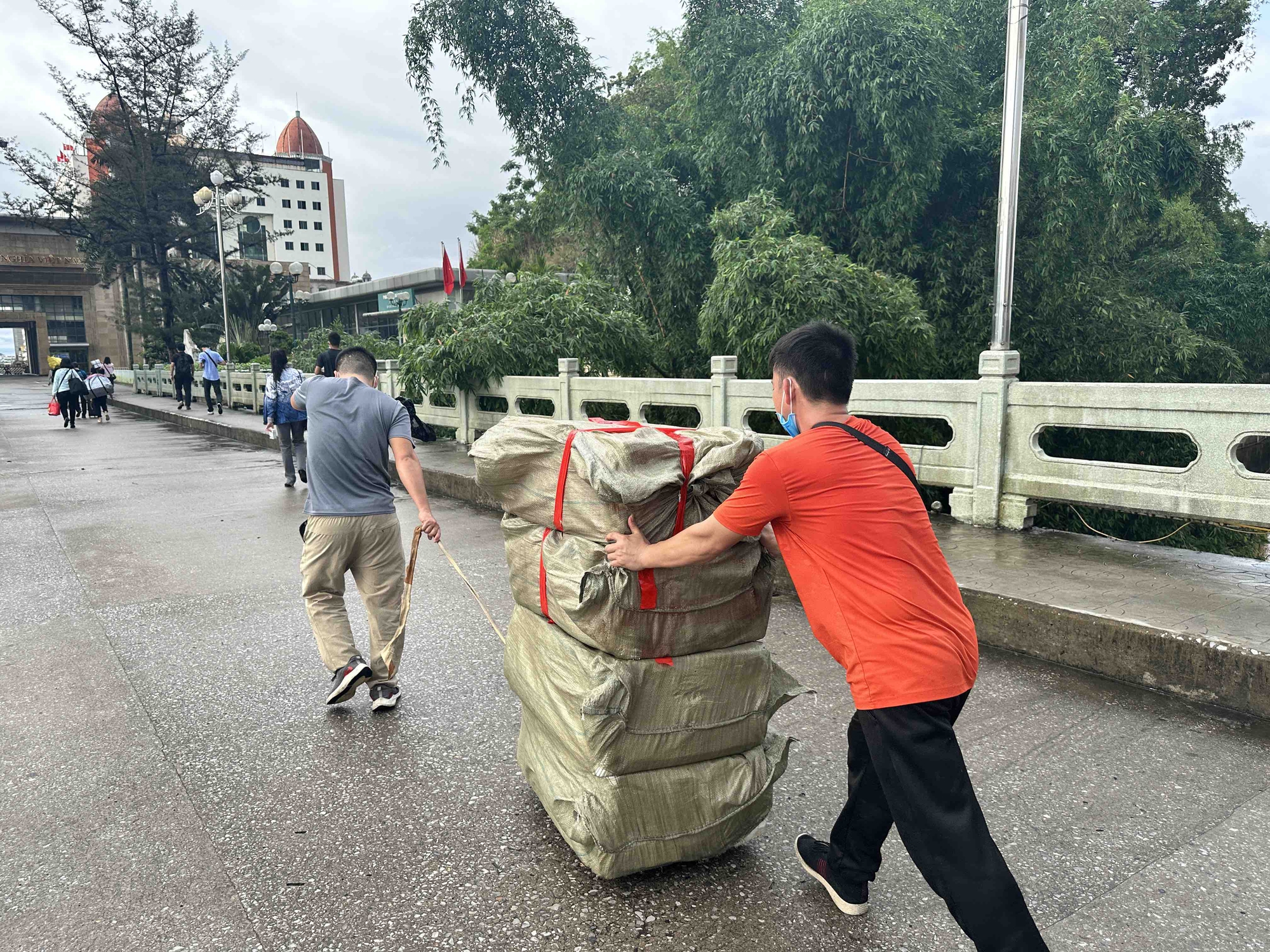
Goods pulled across the border bridge
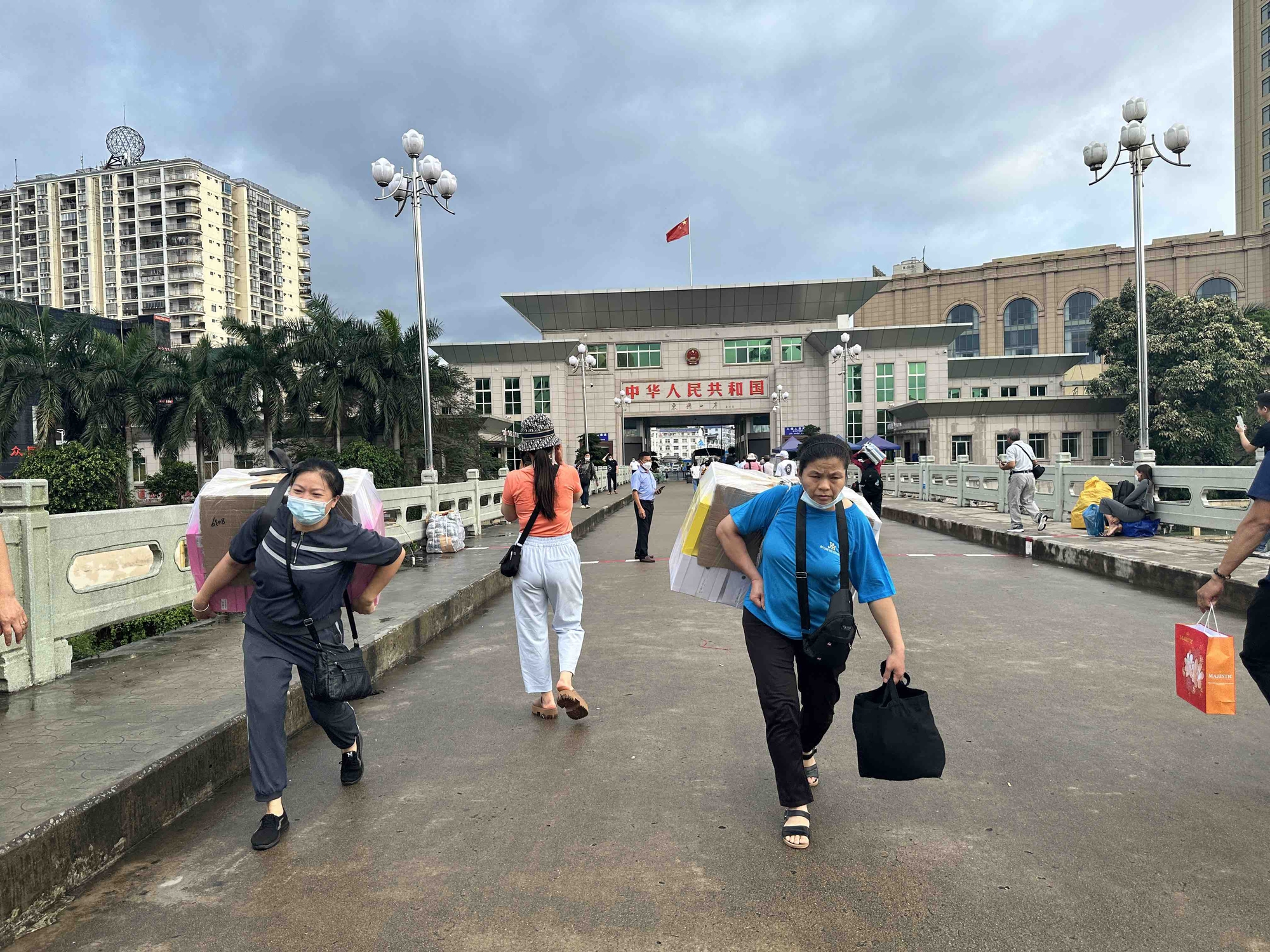
Women carrying quite large packages
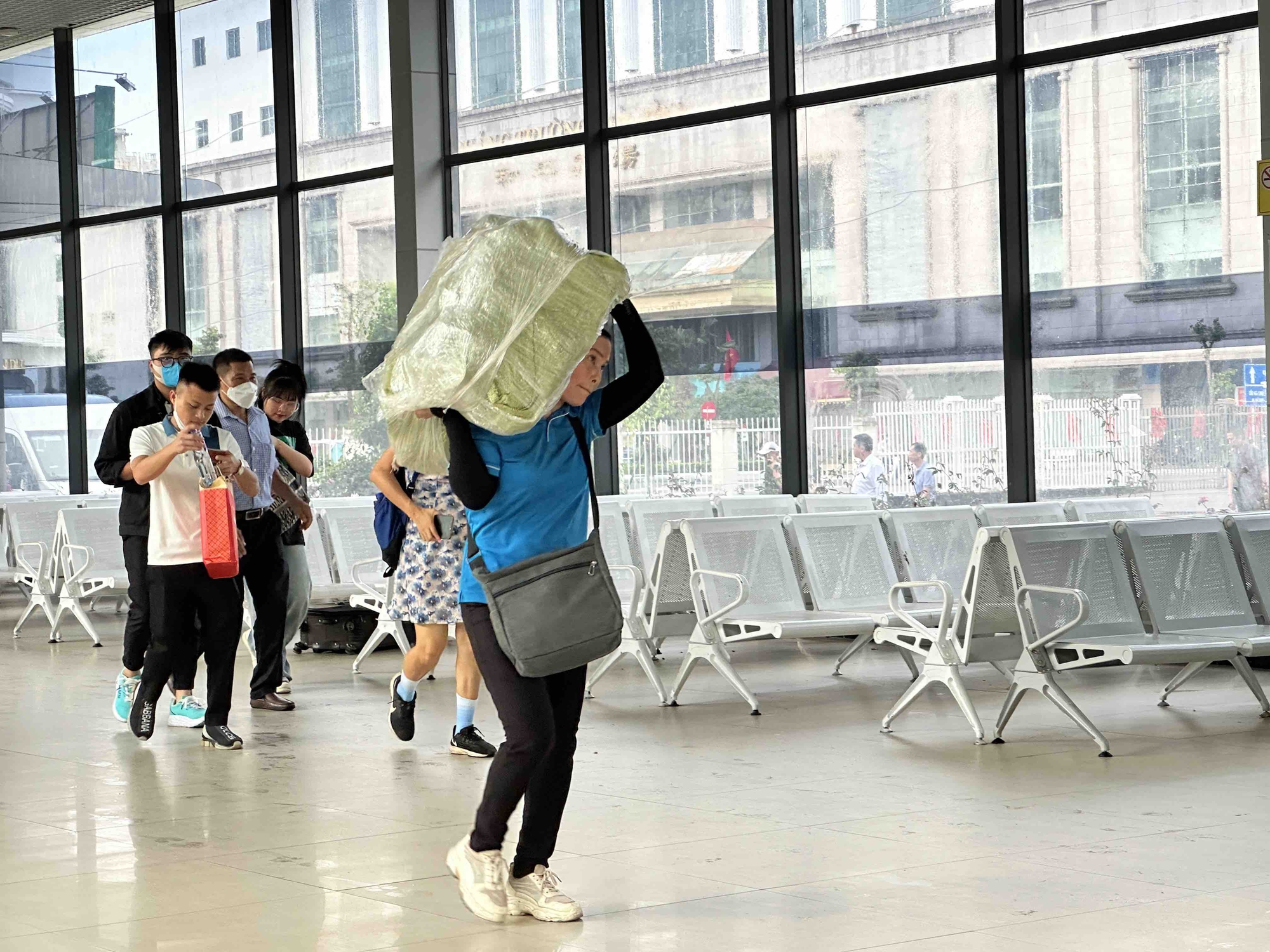
Many border residents said that the number of people going to Dongxing (China) is still not as high as before 2019. Because, currently, the authorities on the other side strictly control the group of residents going to 'buy goods' to avoid the situation of taking advantage of crossing the border.
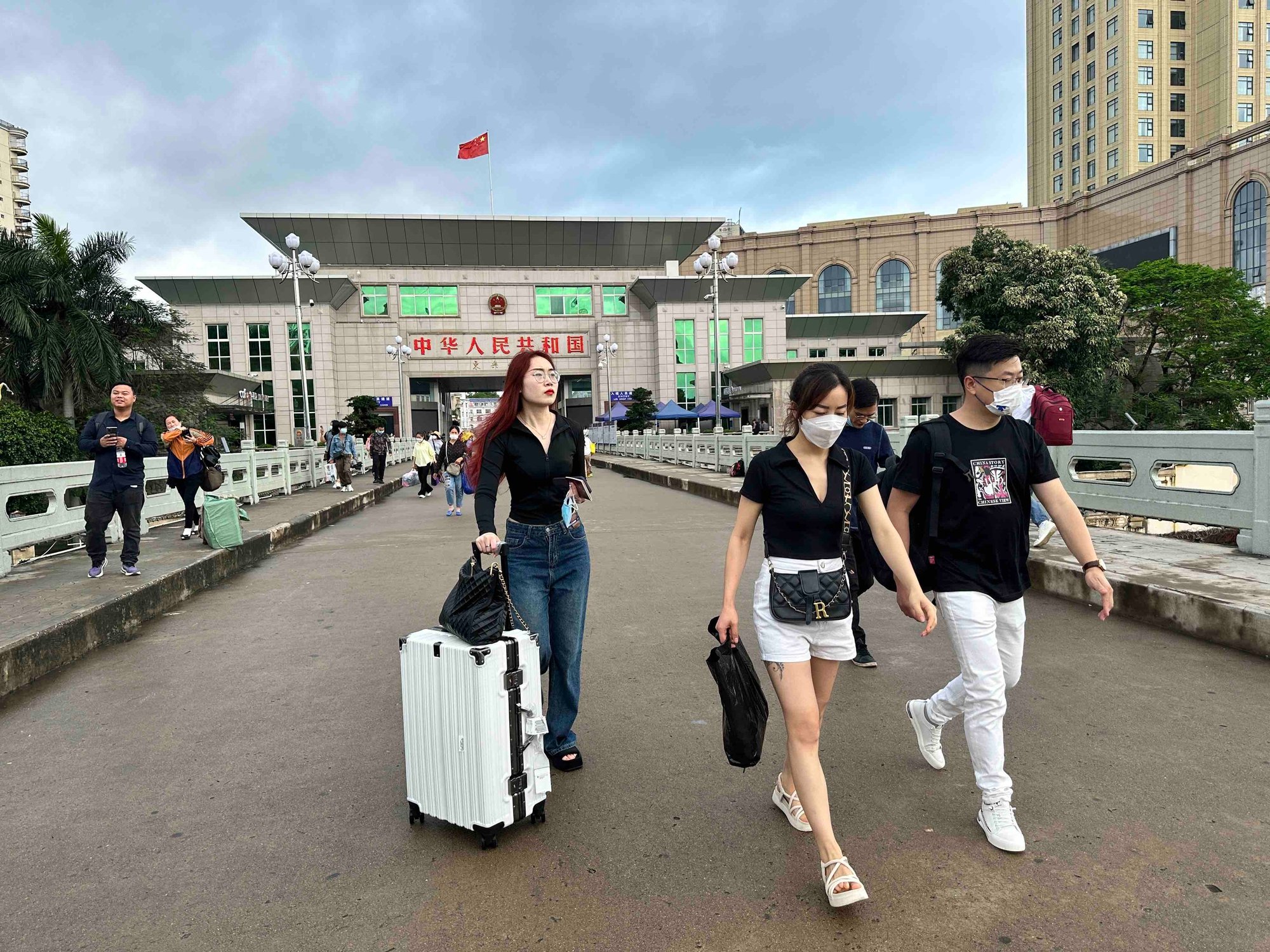
Compared to the April 30 - May 1 holiday, Mong Cai International Border Gate is now much more open.
Source link



![[Photo] Hanoi morning of October 1: Prolonged flooding, people wade to work](https://vphoto.vietnam.vn/thumb/1200x675/vietnam/resource/IMAGE/2025/10/1/189be28938e3493fa26b2938efa2059e)


![[Photo] President of the Cuban National Assembly visits President Ho Chi Minh's Mausoleum](https://vphoto.vietnam.vn/thumb/1200x675/vietnam/resource/IMAGE/2025/10/1/39f1142310fc4dae9e3de4fcc9ac2ed0)
![[Photo] Keep your warehouse safe in all situations](https://vphoto.vietnam.vn/thumb/1200x675/vietnam/resource/IMAGE/2025/10/1/3eb4eceafe68497989865e7faa4e4d0e)




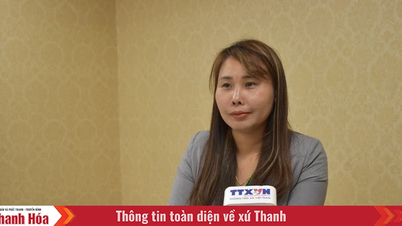

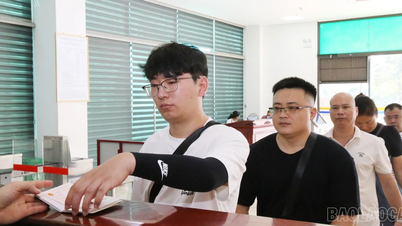

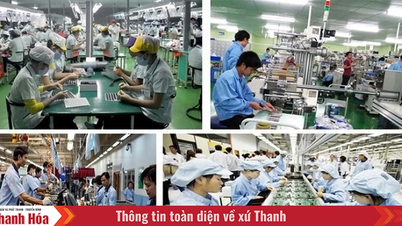
![[Podcast] National Day Gift Giving on September 2nd by Household](https://vphoto.vietnam.vn/thumb/402x226/vietnam/resource/IMAGE/2025/8/30/2ced906def164dd98177e0192359030f)





















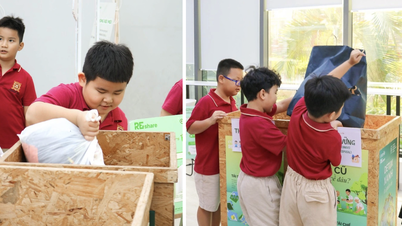






























































Comment (0)